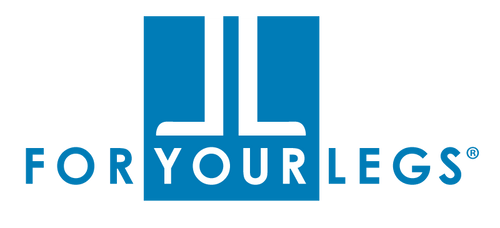Condition Guide
Chronic venous insufficiency (CVI)
Veins have valves that keep blood moving towards the heart. Venous insufficiency, or chronic venous insufficiency, is a condition where the blood flow through the veins isn’t working correctly, which causes blood to pool in the legs. This improper functioning of vein valves in the legs causes swelling and skin changes. This can lead to problems that include varicose veins.
The 30-40 mmHg knee length compression stocking is the most widely prescribed stocking for chronic venous insufficiency.
Please talk with your doctor or healthcare provider before wearing compression 20 mmHg and greater.
Deep vein thrombosis (DVT)
A deep vein thrombosis (DVT) is a blood clot that forms in a vein that either partially or completely blocks the flow of blood.
30-40 mmHg knee length compression stockings are prescribed to manage the acute symptoms of DVT and to help prevent the long-term effects. Please talk with your doctor or healthcare provider before wearing compression 20 mmHg and greater.
Diabetes
If you have been diagnosed with diabetes, you are probably familiar with the importance of diabetic foot care. Diabetes can cause two major foot problems: diabetic neuropathy, meaning the diabetic is unable to feel heat, cold, pain, or cuts on their feet, and peripheral vascular diabetes, which affects the blood flow and prevents cuts and sores from healing properly.
Diabetic socks can be used in a diabetic foot care regimen. Most diabetic socks are seamless and designed to lightly compress the foot, ankle, and leg to improve circulation and prevent harmful problems from occurring. Diabetic socks can also prevent blood clots, and assist in relieving achy legs, which helps soothe foot-related discomfort.
Lymphedema - upper extremity and legs
Lymphedema is the chronic swelling that happens when the lymph is not moving properly.
There are two types of lymphedema:
- Primary lymphedema is due to a developmental defect (malformation dysplasia) of the lymph vessels and/or lymph nodes. This can be congenital or hereditary.
- Secondary lymphedema is caused by an insult to the lymphatic system and can appear at any age. Some causes of secondary lymphedema include: surgery/radiation for cancer, malignant tumors, trauma, infection, chronic venous insufficiency, obesity, self-induced, or filariasis.
Lymphedema garments are designed to subtly contain, and control the swelling caused by a retention of fluids.
Mild-Moderate-Severe swelling
Edema, also called swelling, is when fluid builds up in the body’s tissues. This often occurs in the lower leg and ankle. Swelling can be caused by medications, injury, vein problems, heart problems, or other reasons. Symptoms of edema include enlarged ankles and calf, discomfort or tired, heavy feeling in the legs, decreased mobility and decreased skin elasticity.
The 15-20 mmHg moderate compression is most often used to treat mild swelling. Moderate to severe swelling typically requires a higher compression for proper treatment and alleviation of the condition.
Pregnancy
During pregnancy, the female body transforms. During this transformation, due to the added demands of the growing fetus, the blood flow is affected, and the volume of blood in the woman’s body nearly doubles. Added hormones in the body also weaken and stretch the veins.
The additional blood pressure from pregnancy can also cause permanent damage to the valves and vein walls, allowing blood to flow backwards and pool in lower extremities. This is what causes the swelling and tired, achy feeling in the legs. This is also why circulatory problems are most prominent in the ankles and lower legs.
Worn during the day, maternity compression stockings apply a light, soothing pressure to counteract swelling, prevent fluid from pooling, and protect against varicose veins.
Tired, aching legs
Standing and sitting for long periods of time can result in blood pooling at the ankles, which then has a hard time returning to the heart.This can cause your legs to ache and feel tired. 8-15 mmHg, 12-16 mmHg and 15-20 mmHg gradient compression stockings give a gentle squeeze at the ankles and up the legs to get your blood flowing back toward your heart which relieves your tired, achy legs.
Varicose veins
Varicose veins are twisted, enlarged veins located near or raised above the surface of the skin. Varicose veins are often dark blue in color, and are most commonly seen on the legs, but they can occur anywhere on the body. These veins connect with the deep veins of the leg and play a minor role in the transfer of blood to the heart.
20-30 mmHg is the most commonly selected level of compression for varicose veins. The compression level that is best for you will be depend on the severity of your symptoms. Please consult with your physician or healthcare professional to determine the compression best suited for you.
Foot ailments
There are also many recommended products for foot conditions including sensitive feet, heel spurs, metatarsal pain, heel spurs, foot pain, sagging forefoot and much more.


